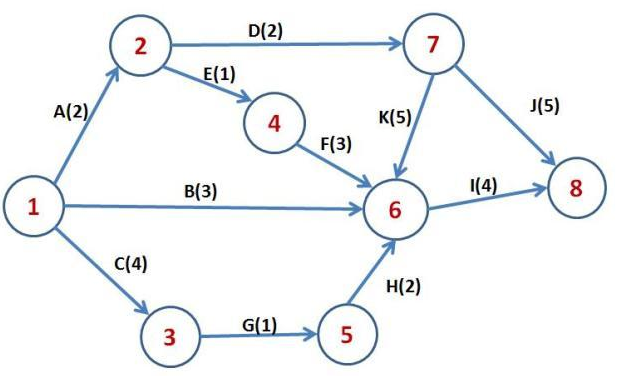


PERT is an acronym for Program (project) Evaluation And Review Technique whereby planning, scheduling, organizing, coordinating and controlling are involved to make sure that the projects are done within due time. The emphasis of this technique is focused on start and completion of events rather than on activities. The activities taking place between events are not specified.
In this technique, the first thing is that, the project is divided into activities and events, and then a proper sequence is ascertained and eventually a network is constructed. After which, time needed in each activity is calculated and critical path connecting all events is determined.
PERT is an important technique in the sense that it helps in identifying critical areas which might undermine faster completion of the work and more importantly, it provides a framework to determine how resources can be transferred from one job to another.
CPM is an acronym for critical path method; it can also be referred to as critical path analysis. CPM is a resource-utilization algorithm for scheduling a set of project activities. This project management technique was developed in 1957 by James Kelley of Ramington Rand and Morgan Walker of Dupoint.
Critical path method identifies the sequence of crucial and interdependent steps that comprise a work plan from start to finish. It also identifies non-critical tasks. The concept of critical path method recognizes that completion of some tasks in a project is dependent on the completion of other tasks. Some activities cannot start until others are finished.
A good critical path schedule can help to identify the activities that must be completed on time in order to complete the whole project on time. Also, It can tell the earliest and latest dates each activity can start on in order to maintain the schedule and more importantly, show the tasks that can be delayed and for how long without impacting the overall project schedule.

| BASIS OF COMPARISON | PERT | CPM |
| Type Of Tool | PERT is a probabilistic project management tool. | The CPM is a deterministic project management tool. |
| Focus | PERT is an event oriented tool, whereby the network interest is focused upon start or completion of events and not on activities themselves. | CPM is an activity oriented tool, the network interest is focused upon the start and completion of activities and not events themselves. |
| Usefulness | PERT is useful for research and development project as they comprise of the unpredictable tasks and activities. | CPM is useful for the construction projects because it comprises of the predictable tasks and activities. |
| Terminology | PERT technique involves use of words like events, network diagram and slacks. | CPM technique involves use of terminology like arrow diagram, nodes and float. |
| Grouping of Activities | PERT does not categories activities into critical and non-critical activities. | CPM categorizes activities into critical and non-critical activities. |
| Duration of Activity | In PERT, duration of activities are not estimated with a fair degree of accuracy (activities are not so accurate and definite). | In CPM, duration of activity is estimated with a fair degree of accuracy. |
| Room For Uncertainty | In PERT, allowance is made for uncertainties in the duration of time involved. | In CPM, no allowance is made for uncertainties in the duration of time involved. |
| Time-Cost Relationship | In PERT, time is not related to cost. | In CPM, the objective is developing an optimum time-cost relationship. |
| Application | PERT is suitable in defense projects and R&D where activity time cannot be reliably predicted. | CPM is suitable for problems in industrial setting, plant maintenance, civil construction projects etc. |